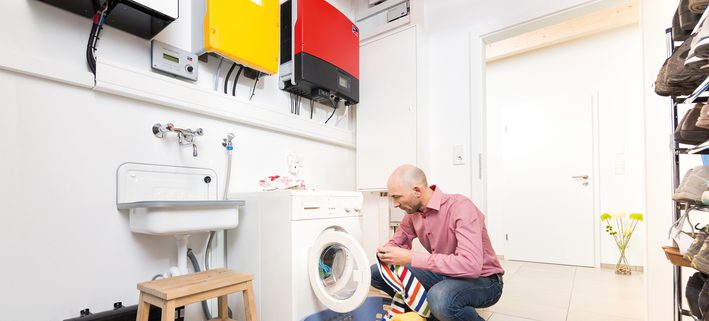Game changers and customer benefits: Integrating a range of battery types into storage systems

One of the questions we’ve been frequently asked at SMA is how compatibility with the existing variety of batteries in the market can be put into practice.
Volker Wachenfeld, an SMA expert in storage technology, provides answers to questions on his blog post and looks back at the evolution of the topic at SMA. The article can be found on the blog at PV Tech Storage. Happy reading.


Hello Sarah
One of the set backs in using multi-cell lead acid batteries is that cells can become unevenly charged requiring a lengthy episode of float charging to equalize cells and even then there is no guarantee that this will happen. At such times the battery is unavailable for regular use.
Linear Technology provide the DC2043B – LTC3305EFE Demo Board | Lead Acid Battery Balancer for 2-4 Cells. http://www.linear.com/solutions/6025 I would expect a progressive company such as SMA to provide this or similar technology to ensure customers obtain the maximum life from their lead acid batteries especially in the domestic market.
Can you please provide awareness of this to your design effort.
Hi Leonie
Sounds good. I take it that you are talking beyond SunSpec on ModBus? If you could email me a URL for the interface spec (or a search string) and anything considered releasable on connection of flow batteries to SI I would greatly appreciate it.
I’m also awaiting the PlugWise compatible release of Home Manager with bated breath 🙂
Thanks!
SMA has an advanced BMS built into the Sunny Island range, as I understand it. However, there are new technologies which have totally different requirements to a lead acid or lithium chemistry, such as flow batteries. At a high level, flow batteries are going to have constraints on charge and discharge currents (they are effectively high impedance), and completely go against the grain of current chemistries by discharging to zero – in fact flow batteries need to regularly discharge to avoid dendrite build-up which might damage the cell membrane. The flow technology for which I have an interest is Zinc Bromine; I suspect that there is a common tendency of flow battery developers to have developed their own BMS, in the same way that Lithium battery manufacturers attempt to protect their cells from discharge.
I also understand that there is the option of turning battery management off. It would seem that without necessarily developing a one-size-fits-all BMS in SI, intelligently accommodating conditions that would represent faults in most chemistries will allow the maximum interworking potential. The fact that Home Manager can apply an overview set of rules also offers a way of accommodating new technology.
In other words, preventing the SI from shut-down at zero stack voltage, for example by using the BATEMP sensor as a ‘stack still alive, wait for me’ signal, and being able to provide charging current into a 0V stack would prevent a multiplicity of failures. All of this can be locked away under expert mode.
It is obvious that there will be many offerings and that few will make the transition from good idea to commercial success, but a few basic keyholes will allow a potentially massive expansion in utility of Home Manager, allowing more sophisticated interworking with the winners, or development of a standardised intelligent BMS interface allow smart batteries to talk with SI and Home Manager.
Hi Neil,
Yes, you are completely right.
We are quite sure that there will not be one technology dominating the residential ESS market, but a whole variety of chemistries. For this reason we decided to set up an open interface to allow the Sunny Island to connect to any kind of battery management system, regardless of the chemistry. The interface documentation is available on our website. We qualify more and more battery technologies and suppliers in our test lab. As an example, the current generation of Sunny Island inverters is already supporting flow batteries, and there’s already a couple of installations in the field.
Best regards
Leonie